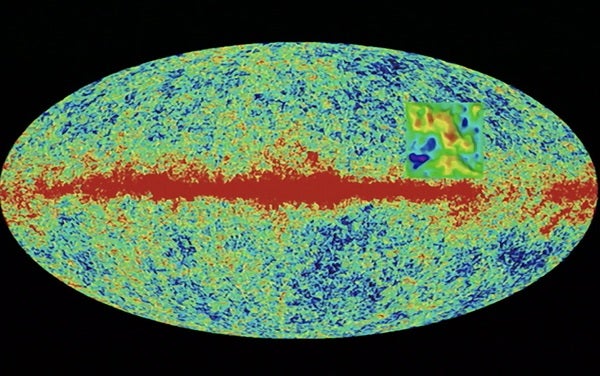Our ignorance is a consequence of the fact that the temperature (or, equivalently, the energy) of everything in the early universe exceeds, by far, those that we can probe experimentally in even the most advanced laboratory. However, we have strong reasons to believe that the four fundamental interactions that govern how matter behaves — the strong, weak, electrical, and magnetic interactions — are all manifestations of a single underlying physical mechanism that occurs only at these extreme temperatures. As the universe expanded and cooled, the strong and electro-weak interactions (this refers to the weak, electric, and magnetic interactions together) underwent a phase change, which means they split apart and became distinct.
It is not known exactly (i.e., through direct experimental evidence) how this process proceeded, but by comparison with other phase changes we can probe, it is thought possible that this strong/electro-weak phase transition (splitting) could drive the period of inflation. The time period you reference (10-35–10-32 second) is directly tied to the temperature at which this phase transition was thought to occur.
It is important that observational facts be differentiated from theory or speculation. Although inflation does not yet fall within the realm of observational fact, many of its potential implications do. I’ll list just a couple: We observe correlations in the cosmic microwave background (CMB) that are acausal; fluctuations in temperature that occur at two points in space so far apart that light could not travel between them in the lifetime of the universe are found, empirically, to be highly correlated. Also, there is a characteristic scale associated with these fluctuations, measured by both the WMAP and Planck satellites, that is too large to explain unless inflation occurred. Finally, our universe currently seems to be undergoing something like the inflation that people imagine in the early universe. By some bizarre coincidence it seems to have started about the time our solar system formed, some 5 billion years ago.
These facts are true whether or not our current theories of the early universe are true. Indeed many leading physicists, including some of those involved with the invention of the inflationary paradigm in the first place (e.g., Paul Steinhardt, Neil Turok), find inflation to be so contrived and finely tuned that it cannot be a viable ultimate theory of the early universe.
William Jones
Associate Professor,
Department of Physics, Princeton University,
Princeton, New Jersey










